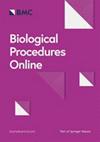Employing Raman Spectroscopy and Machine Learning for the Identification of Breast Cancer
IF 4.3
3区 生物学
Q1 BIOCHEMICAL RESEARCH METHODS
引用次数: 0
Abstract
Breast cancer poses a significant health risk to women worldwide, with approximately 30% being diagnosed annually in the United States. The identification of cancerous mammary tissues from non-cancerous ones during surgery is crucial for the complete removal of tumors. Our study innovatively utilized machine learning techniques (Random Forest (RF), Support Vector Machine (SVM), and Convolutional Neural Network (CNN)) alongside Raman spectroscopy to streamline and hasten the differentiation of normal and late-stage cancerous mammary tissues in mice. The classification accuracy rates achieved by these models were 94.47% for RF, 96.76% for SVM, and 97.58% for CNN, respectively. To our best knowledge, this study was the first effort in comparing the effectiveness of these three machine-learning techniques in classifying breast cancer tissues based on their Raman spectra. Moreover, we innovatively identified specific spectral peaks that contribute to the molecular characteristics of the murine cancerous and non-cancerous tissues. Consequently, our integrated approach of machine learning and Raman spectroscopy presents a non-invasive, swift diagnostic tool for breast cancer, offering promising applications in intraoperative settings.利用拉曼光谱和机器学习识别乳腺癌
乳腺癌对全世界妇女的健康构成重大威胁,在美国,每年约有 30% 的妇女被确诊患上乳腺癌。在手术过程中识别癌变乳腺组织和非癌变乳腺组织对于彻底切除肿瘤至关重要。我们的研究创新性地利用机器学习技术(随机森林 (RF)、支持向量机 (SVM) 和卷积神经网络 (CNN))与拉曼光谱技术相结合,简化并加快了小鼠正常乳腺组织与晚期癌症乳腺组织的区分。这些模型的分类准确率分别为:RF 94.47%、SVM 96.76% 和 CNN 97.58%。据我们所知,这项研究是首次比较这三种机器学习技术根据拉曼光谱对乳腺癌组织进行分类的有效性。此外,我们还创新性地发现了有助于确定小鼠癌组织和非癌组织分子特征的特定光谱峰。因此,我们将机器学习和拉曼光谱技术相结合的方法为乳腺癌提供了一种无创、快速的诊断工具,在术中应用前景广阔。
本文章由计算机程序翻译,如有差异,请以英文原文为准。
求助全文
约1分钟内获得全文
求助全文
来源期刊

Biological Procedures Online
生物-生化研究方法
CiteScore
10.50
自引率
0.00%
发文量
16
审稿时长
>12 weeks
期刊介绍:
iological Procedures Online publishes articles that improve access to techniques and methods in the medical and biological sciences.
We are also interested in short but important research discoveries, such as new animal disease models.
Topics of interest include, but are not limited to:
Reports of new research techniques and applications of existing techniques
Technical analyses of research techniques and published reports
Validity analyses of research methods and approaches to judging the validity of research reports
Application of common research methods
Reviews of existing techniques
Novel/important product information
Biological Procedures Online places emphasis on multidisciplinary approaches that integrate methodologies from medicine, biology, chemistry, imaging, engineering, bioinformatics, computer science, and systems analysis.
 求助内容:
求助内容: 应助结果提醒方式:
应助结果提醒方式:


